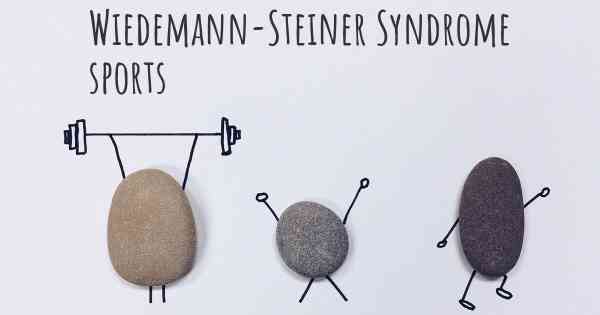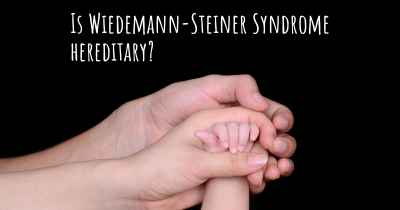Is it advisable to do exercise when affected by Wiedemann-Steiner Syndrome? Which activities would you suggest and how intense should they be?
See if it is advisable for people with Wiedemann-Steiner Syndrome to practice sports and which ones are the most recommended if you have Wiedemann-Steiner Syndrome

Wiedemann-Steiner Syndrome (WSS) is a rare genetic disorder characterized by various physical and developmental abnormalities. While exercise can be beneficial for individuals with WSS, it is crucial to approach it with caution and tailor it to the specific needs and abilities of the affected person.
Before engaging in any exercise program, it is essential to consult with a healthcare professional familiar with WSS to assess the individual's overall health, physical capabilities, and any specific considerations related to their condition. This will help determine the most suitable exercises and intensity levels.
Low-impact aerobic exercises are generally recommended for individuals with WSS. These activities provide cardiovascular benefits without placing excessive stress on the joints and muscles. Some examples include:
- Walking: A simple and accessible exercise that can be adapted to the individual's fitness level. It promotes cardiovascular health and helps maintain muscle tone.
- Swimming: This low-impact exercise is gentle on the joints and offers a full-body workout. It can improve cardiovascular fitness, strength, and flexibility.
- Cycling: Whether on a stationary bike or outdoors, cycling is a low-impact activity that can be adjusted to the individual's abilities. It helps strengthen leg muscles and improve cardiovascular endurance.
- Elliptical training: This exercise machine provides a low-impact alternative to running or jogging. It engages multiple muscle groups and improves cardiovascular fitness.
Strength training exercises can also be beneficial for individuals with WSS, as they help improve muscle tone, strength, and overall physical function. However, it is crucial to use appropriate weights and techniques to avoid injury. Some suitable strength training exercises include:
- Bodyweight exercises: These exercises use the individual's own body weight as resistance and can be adapted to their abilities. Examples include squats, lunges, push-ups, and planks.
- Resistance band exercises: Using resistance bands can provide a safe and effective way to build strength without placing excessive stress on the joints. They can be used for various exercises targeting different muscle groups.
- Lightweight dumbbell exercises: Using light dumbbells, individuals can perform exercises such as bicep curls, shoulder presses, and tricep extensions. It is important to start with light weights and gradually increase as strength improves.
Flexibility exercises are essential to maintain joint mobility and prevent muscle tightness. Stretching exercises should be performed gently and without force, focusing on major muscle groups. Some suitable flexibility exercises include:
- Static stretching: Holding gentle stretches for 15-30 seconds can help improve flexibility and range of motion. It is important not to bounce or push beyond a comfortable range.
- Yoga or Pilates: These practices incorporate a combination of stretching, strengthening, and relaxation exercises. They can help improve flexibility, balance, and body awareness.
- Tai Chi: This gentle martial art combines slow, flowing movements with deep breathing and relaxation. It can enhance flexibility, balance, and overall well-being.
Intensity levels of exercise should be individualized based on the person's abilities, overall health, and any specific considerations related to WSS. It is generally recommended to start with low to moderate intensity and gradually increase as tolerated. Monitoring heart rate and perceived exertion can help gauge intensity levels.
It is important to note that individuals with WSS may have varying degrees of physical limitations and developmental delays. Therefore, exercises should be adapted and modified accordingly. Regular monitoring by healthcare professionals is crucial to ensure exercise programs are safe and effective.
In conclusion, exercise can be beneficial for individuals with Wiedemann-Steiner Syndrome, but it should be approached with caution and tailored to their specific needs. Low-impact aerobic exercises, strength training, and flexibility exercises are generally recommended. The intensity levels should be individualized and gradually increased as tolerated. Consulting with healthcare professionals familiar with WSS is essential to develop a safe and effective exercise program.
Posted Jul 18, 2017 by Shannon 1380
Many children with WSS have enjoyed and benefited from hippotherapy (horse riding).
Posted Jan 16, 2018 by anonymous 3980








